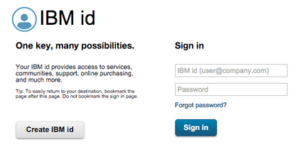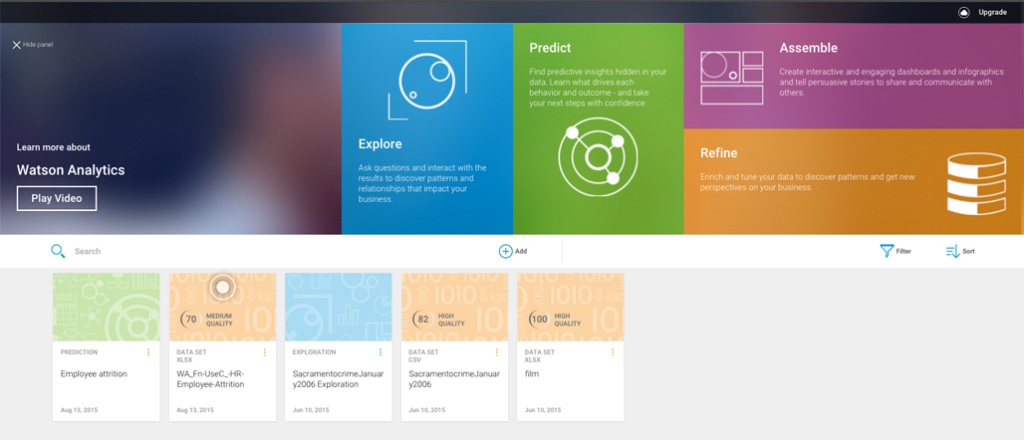Watson Analytics
 I recently had an introductory presentation to IBM’s Watson Analytical Engine and was mightily impressed by what I saw.
I recently had an introductory presentation to IBM’s Watson Analytical Engine and was mightily impressed by what I saw.
IBM Watson is a technology platform that uses natural language processing and machine learning to reveal insights from large amounts of unstructured data. Unstructured data could typically include news articles, research reports, social media posts and enterprise system data.
You can set up a freemium account on Watson and get immediate access to the full range of features. As with most freemium services, there are some limits, these come in the form of file size restrictions and data storage. You can only upload flat files that are no more than 100,000 rows and 50 columns and there is data storage limit is 500 MB. If you want more than this you have to consider the Personal or Professional editions.
 To get started you will need to set up an IBM id (e.g. your email) and agree to the Ts & Cs. Nothing ominous here, and you can opt out of any IBM emails. Once you’re email is validated, sign-in to your newly created account
To get started you will need to set up an IBM id (e.g. your email) and agree to the Ts & Cs. Nothing ominous here, and you can opt out of any IBM emails. Once you’re email is validated, sign-in to your newly created account
Once your account has been validated, sign-in and you’ll see the main Watson interface:
To get started I recommend watching the video.
There is a temptation to dive straight in and work your way through the various tools and features. However, not everything is intuitive, and it’s well worth spending some time looking at the various tutorials and help files. I recommend:
I had a few problems when uploading some of my own “test” datasets, which as I mentioned earlier are limited to 100,000 rows and 50 columns and 500Mb for the free account. If you just want to have a play with the various features, it’s probably better to use one of the tried and tested datasets available from the Watson Analytic Community
A word of warning – you can get totally immersed in the Watson environment, and I’ve probably lost a day or two somewhere in trying out the technology. However, if your job involves data and decision making, I recommend giving it a go.
Remember too, this is a decision support tool and does not a decision-making tool. You still have to engage your brain when looking at the visualisations, and you do have to have some understanding of your data. And don’t go away thinking that the “Predictions” facility is going to give you the winning numbers for this week’s lottery – but by all means try!










One thought on “Watson Analytics”